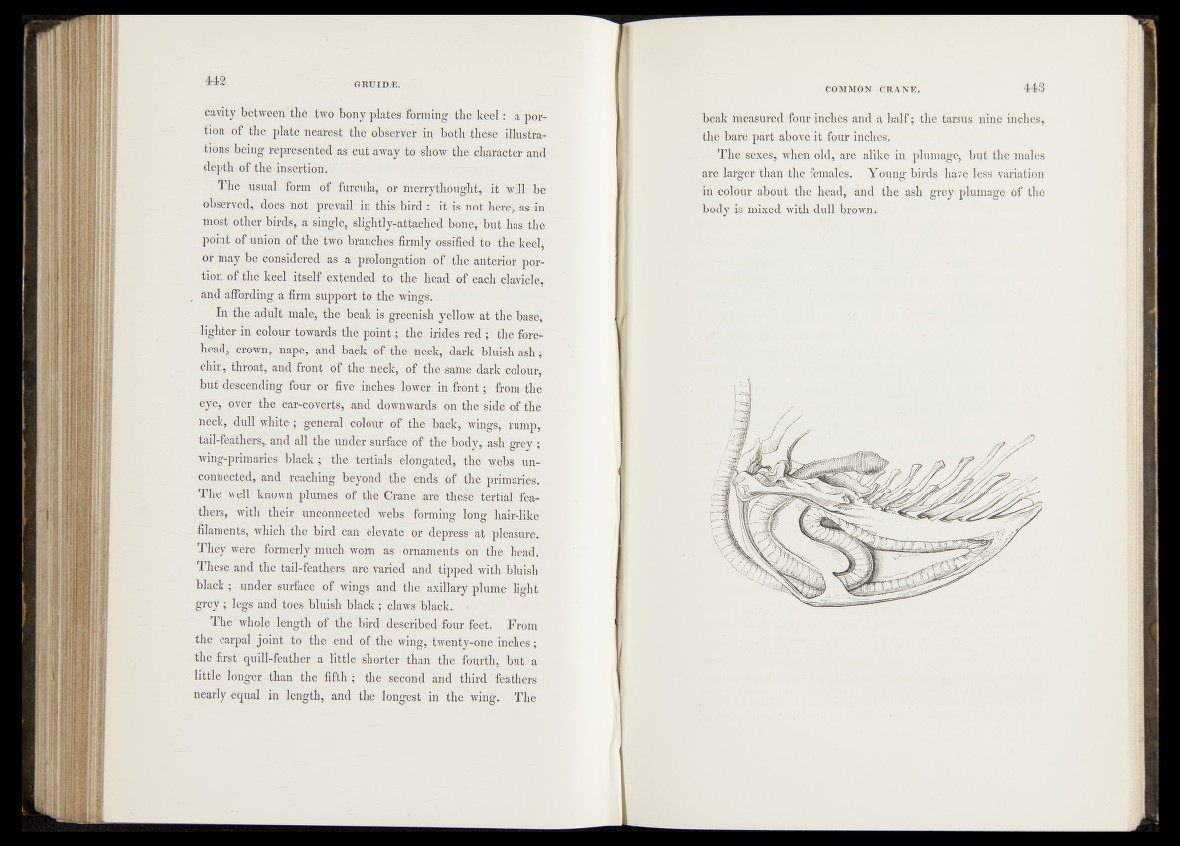
cavity between the two bony plates forming the keer: apportion
of the plate nearest the- abserveoh--both these - Hhustra-
tion&heing represented as 'cut away to show the character and
depth of the insertion.
The usual form of furpula, or -merrythought, it will be
Observed,.'does not prevail in this bird
. most_other birds, ir single^ slightly-attached bo%Hbiit. has #rfe
point of union of the two branches firndy'ossified ifcb^tee- kfeel;’
of may be considered as a prolongation ^fjfthe' miluifar pnr-i
tion-pf the keel itself extended to the head of ehch clayiMb,
and affording.a firm support to the -wings!
In the adujt male, thé beak istgjreenish yellow at the- base";
slighter in colour towards the point; the iridés fed ;" th |^ r^ -~
head, crown, nape, and back oTthe neck, dark ash;
chin, throat, and front of the mock, of the same- d a rl^ ^ ^ u r,
-but descending Tour or five inches-lower in front,- from flic
èye, ^ovër the ear-coverts,- and downwards on fps|Jrdn;o£_the,
heck, dull white ^general cdfour of, the * J^ ^w in g s, rump,'
tail-feather^, and all the un® rsm^,(# h f -the boi|y, ash grey-;
wihg-primaties black; the' tertials elong^^&7thlv\^fis unconnected,
and -reaching b|rond the efids_of the tainiagès.
The well known plumes of, tJ^©jane ’tere these tertfarWea-
thers,‘Witli their. unconhectecFwebs- forming long hair-like
filaments, which The bird can- elevate, or
-They' were formefly much worn as omam ents #n~the ‘ihead.
Thesé\and the tail-feathers; are varied and tipped with bluitfe-'
black; under surface of wings and the. axillary plume light
grey ; legs and toes, bluish black;r claws black.
The whole length of the bird described four feet. From
the carpal joint To the |h l of the wing,H;wefity-one inches ;
the first quill-feather a little shorter than the fourth, but a
little longer than the fifth ; the second and „third feathers
nearly equal in length, and' the longest in the wing. The
beak measured four inches and a half ; the tarsus nine inches,
'thh|balre part apjpve it four inches.
ISfjiphe>sexes, when old, are alike in plumage, but the males
'$re larger than the females. Young birds have less variation
mficoloiir abbuktlm head, and the ash gtey plumage of the
<feo‘dy is mixed^witli dull brown.